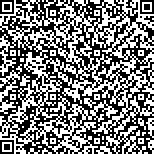| 摘要: |
| 潮间带海藻不可避免地要遭受UV-B的胁迫。本研究以孔石莼(Ulva pertusa)为试材, 研究了UV-B胁迫对其抗氧化酶体系中SOD、CAT、POX、APX、GR、GPX活性及前4 种酶的同工酶表达的影响。结果显示: SOD、CAT、POX酶活性应激反应较为迅速; APX活性始终保持较稳定水平; GR、GPX酶应激表达启动稍晚, 酶活高峰在处理中期6d时出现。SOD同工酶谱有4条酶带, 在UV-B3种剂量处理下, SODⅠ及SODⅡ同工酶活性有所增加; POXⅡ同工酶活性呈小幅增加; 在UV-B诱导下, CAT产生了2条新的同工酶谱带CATⅠ及CATⅡ; APX同工酶仅有1条谱带, 在UV-B处理下与对照差异不大。抗氧化成分AsA 及GSH含量在处理前中期与对照相近。孔石莼的特定增长率(SGR)在1.6 kJ/(m2·d)、4.8 kJ/(m2·d)和9.6kJ/(m2·d)3种剂量UV-B辐射处理下均呈下降趋势, 且在后两种剂量处理下降低尤为显著, 而相应的H2O2及TBARS含量呈不同程度增加。上述结果表明: 孔石莼对UV-B辐射具有一定程度的耐受性, 可以通过提高酶促过氧化体系活性来应答UV-B导致的氧化胁迫, 并且酶活性变化体现出剂量和时间效应。 |
| 关键词: UV-B 辐射 孔石莼(Ulva pertusa) 抗氧化体系 同工酶 |
| DOI:10.11759/hykx20160528002 |
| 分类号: |
| 基金项目:国家自然科学基金青年项目(31300326) |
|
| Effect of UV radiation on the activities of antioxidant enzymes and their isoforms in Ulva pertusa (Chlorophyta) |
|
LI Li-xia,WANG Xiu-jing,ZHAO Ji-qiang
|
| Abstract: |
| The marine ecosystem inevitably undergoes stress because of exposure to enhanced UV-B radiations. The response of the antioxidant defense system, including that of SOD, CAT, POX, APX, GR, and GPX, of the intertidal macroalgae Ulva pertusa to different doses of UV-B radiation and the first four isoenzyme patterns were investigated. SOD, CAT, and POX rapidly responded to UV-B radiation. The response significantly increased during the initial stage of UV-B treatments. The APX activity remained at a more stable level throughout the exposure. The responses of GR and GPX to UV-B stress were observed later, and an activity peak appeared on day 6. The enzymatic assay revealed four distinct bands of SOD, and SODⅠ and SODⅡ activities increased following exposure to UV-B radiation. The activity of POXⅡ isoenzyme slightly increased following the exposure to UV-B radiation. In addition, new bands of CATⅠ and CATⅡ were detected in response to UV treatments. Only one APX band was detected, and there was no significant difference with respect to Ck. The concentrations of antioxidants such as AsA and GSH were similar to those in the control during the early-to-medium term. SGR reduced following exposure to all three doses, including 1.6, 4.8, and 9.6 kJ/(m2·d), and significantly decreased in the latter two treatments. H2O2 and TBARS concentrations significantly increased compared with those in the control. These data suggested that the protection mechanisms of the antioxidant defense system are partly inducible by UV-B to prevent damage and that the enzyme activities change in response to UV-B radiation in a time- and dose-dependent manner. |
| Key words: UV-B radiation Ulva pertusa antioxidant system isoenzyme |
